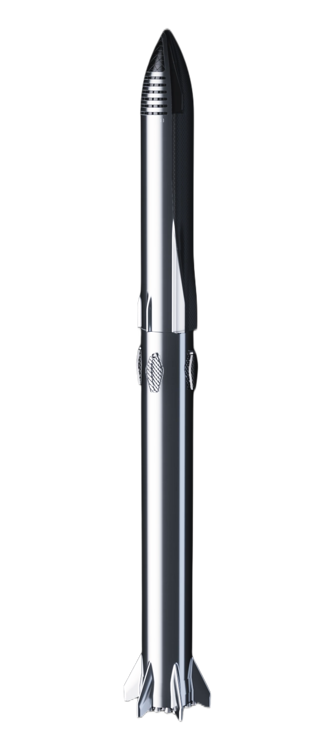On Wednesday, May 5, Starship serial number 15 (SN15) successfully completed SpaceX’s fifth high-altitude flight test of a Starship prototype from Starbase in Texas.
Similar to previous high-altitude flight tests of Starship, SN15 was powered through ascent by three Raptor engines, each shutting down in sequence prior to the vehicle reaching apogee – approximately 10 km in altitude. SN15 performed a propellant transition to the internal header tanks, which hold landing propellant, before reorienting itself for reentry and a controlled aerodynamic descent.
The Starship prototype descended under active aerodynamic control, accomplished by independent movement of two forward and two aft flaps on the vehicle. All four flaps were actuated by an onboard flight computer to control Starship’s attitude during flight and enabled precise landing at the intended location. SN15’s Raptor engines reignited as the vehicle performed the landing flip maneuver immediately before touching down for a nominal landing on the pad.
These test flights of Starship are all about improving our understanding and development of a fully reusable transportation system designed to carry both crew and cargo on long-duration interplanetary flights, and help humanity return to the Moon, and travel to Mars and beyond.
Congratulations to the entire SpaceX team on SN15’s successful flight and landing!
SpaceX's Starship spacecraft and Super Heavy rocket (collectively referred to as Starship) represent a fully reusable transportation system designed to carry both crew and cargo to Earth orbit, the Moon, Mars and beyond. Starship will be the world’s most powerful launch vehicle ever developed, with the ability to carry in excess of 100 metric tonnes to Earth orbit.

The Raptor engine is a reusable methalox staged-combustion engine that powers the Starship launch system. Raptor engines began flight testing on the Starship prototype rockets in July 2019, becoming the first full-flow staged combustion rocket engine ever flown.
In 2023, Japanese entrepreneur Yusaku Maezawa and the crew of dearMoon will become the first civilian passengers on a lunar Starship mission, featuring a fly-by of the Moon during their week-long journey. This flight is an important step toward enabling access for people who dream of traveling to space.


For information about our launch services, contact sales@spacex.com